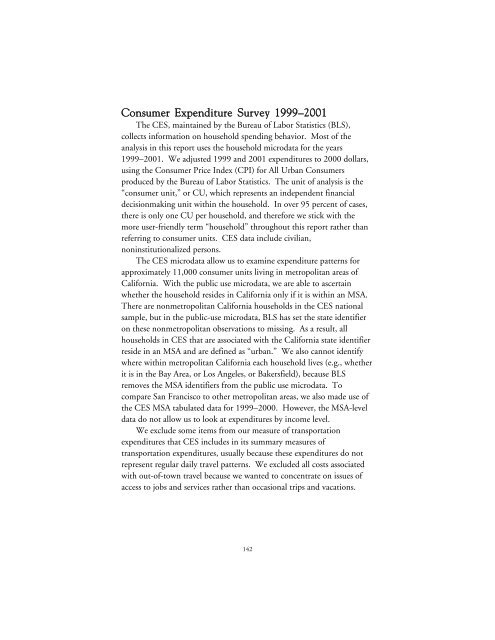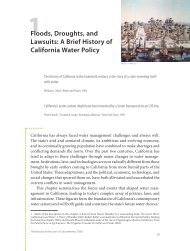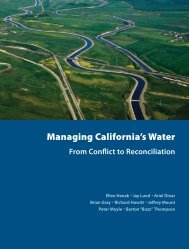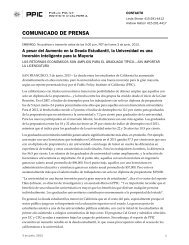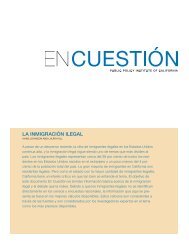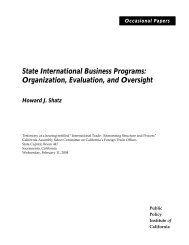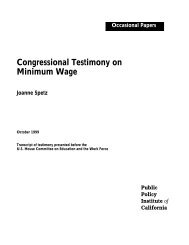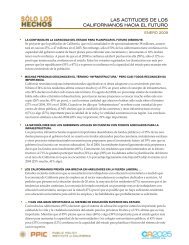Transportation Spending by Low-Income California Households ...
Transportation Spending by Low-Income California Households ...
Transportation Spending by Low-Income California Households ...
You also want an ePaper? Increase the reach of your titles
YUMPU automatically turns print PDFs into web optimized ePapers that Google loves.
Consumer Expenditure Survey 1999–2001<br />
The CES, maintained <strong>by</strong> the Bureau of Labor Statistics (BLS),<br />
collects information on household spending behavior. Most of the<br />
analysis in this report uses the household microdata for the years<br />
1999–2001. We adjusted 1999 and 2001 expenditures to 2000 dollars,<br />
using the Consumer Price Index (CPI) for All Urban Consumers<br />
produced <strong>by</strong> the Bureau of Labor Statistics. The unit of analysis is the<br />
“consumer unit,” or CU, which represents an independent financial<br />
decisionmaking unit within the household. In over 95 percent of cases,<br />
there is only one CU per household, and therefore we stick with the<br />
more user-friendly term “household” throughout this report rather than<br />
referring to consumer units. CES data include civilian,<br />
noninstitutionalized persons.<br />
The CES microdata allow us to examine expenditure patterns for<br />
approximately 11,000 consumer units living in metropolitan areas of<br />
<strong>California</strong>. With the public use microdata, we are able to ascertain<br />
whether the household resides in <strong>California</strong> only if it is within an MSA.<br />
There are nonmetropolitan <strong>California</strong> households in the CES national<br />
sample, but in the public-use microdata, BLS has set the state identifier<br />
on these nonmetropolitan observations to missing. As a result, all<br />
households in CES that are associated with the <strong>California</strong> state identifier<br />
reside in an MSA and are defined as “urban.” We also cannot identify<br />
where within metropolitan <strong>California</strong> each household lives (e.g., whether<br />
it is in the Bay Area, or Los Angeles, or Bakersfield), because BLS<br />
removes the MSA identifiers from the public use microdata. To<br />
compare San Francisco to other metropolitan areas, we also made use of<br />
the CES MSA tabulated data for 1999–2000. However, the MSA-level<br />
data do not allow us to look at expenditures <strong>by</strong> income level.<br />
We exclude some items from our measure of transportation<br />
expenditures that CES includes in its summary measures of<br />
transportation expenditures, usually because these expenditures do not<br />
represent regular daily travel patterns. We excluded all costs associated<br />
with out-of-town travel because we wanted to concentrate on issues of<br />
access to jobs and services rather than occasional trips and vacations.<br />
142


